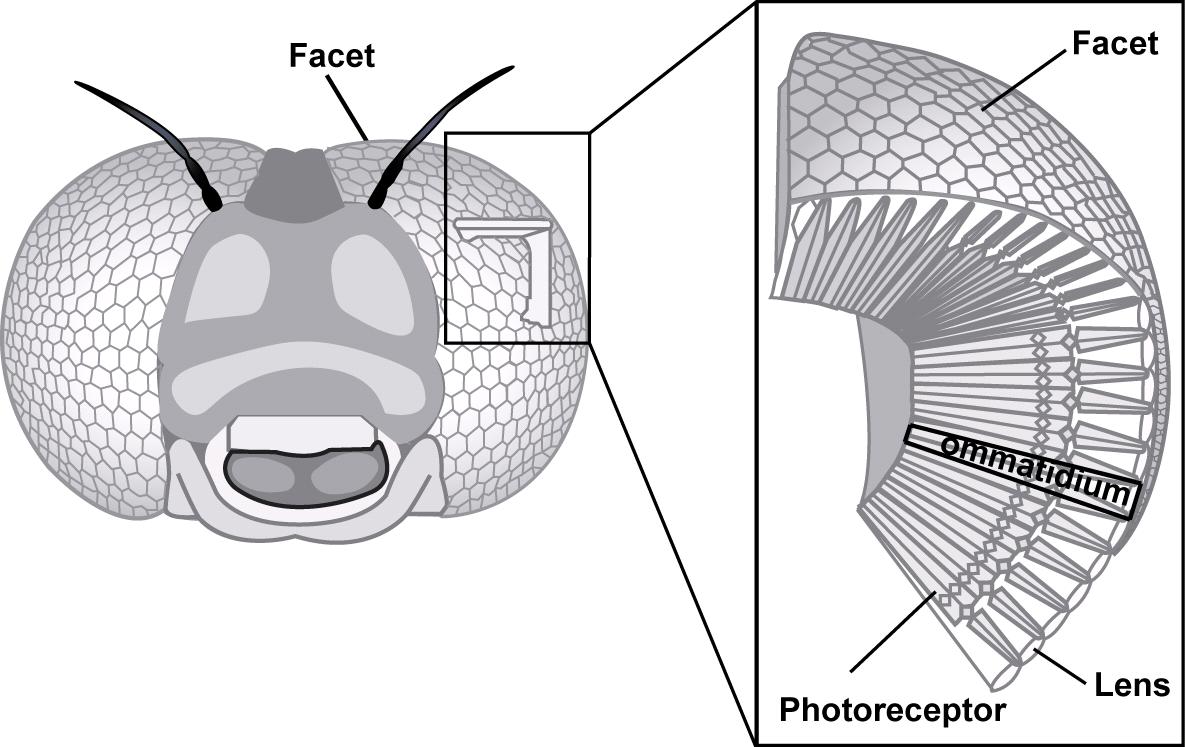Compound eyes:
- They are found in nearly all adults and in many immatures of ametabolous and hemimetabolous orders.
- Compound eyes are composed of many similar, closely-packed facets (called ommatidia) which are the structural and functional units of vision.
- The number of ommatidia varies considerably from species to species: some worker ants have fewer than six while some dragonflies may have more than 28,000.
- Primary pigment cells (or) Iris pigment cells: These are darkly pigmented cells, commonly two in number, present around the crystalline cone which are mainly useful for separating the ommatidia from one another and also restrict the movement of light passing from the neighboring ommatidia.
- The light-sensitive part of an ommatidium is called the rhabdom consisting of closely packed micro-tubules where light-sensitive pigments (e.g. rhodopsin, etc.) are stored.
- Most diurnal insects have pigment cells surrounding each ommatidium.
- Nocturnal and crepuscular (are those that are active primarily during twilight -i.e., dawn and dusk) insects have pigment cells that do not completely isolate each facet. They can detect polarization patterns in sunlight, and discriminate wavelengths in a range from ultraviolet to yellow (but not red).
